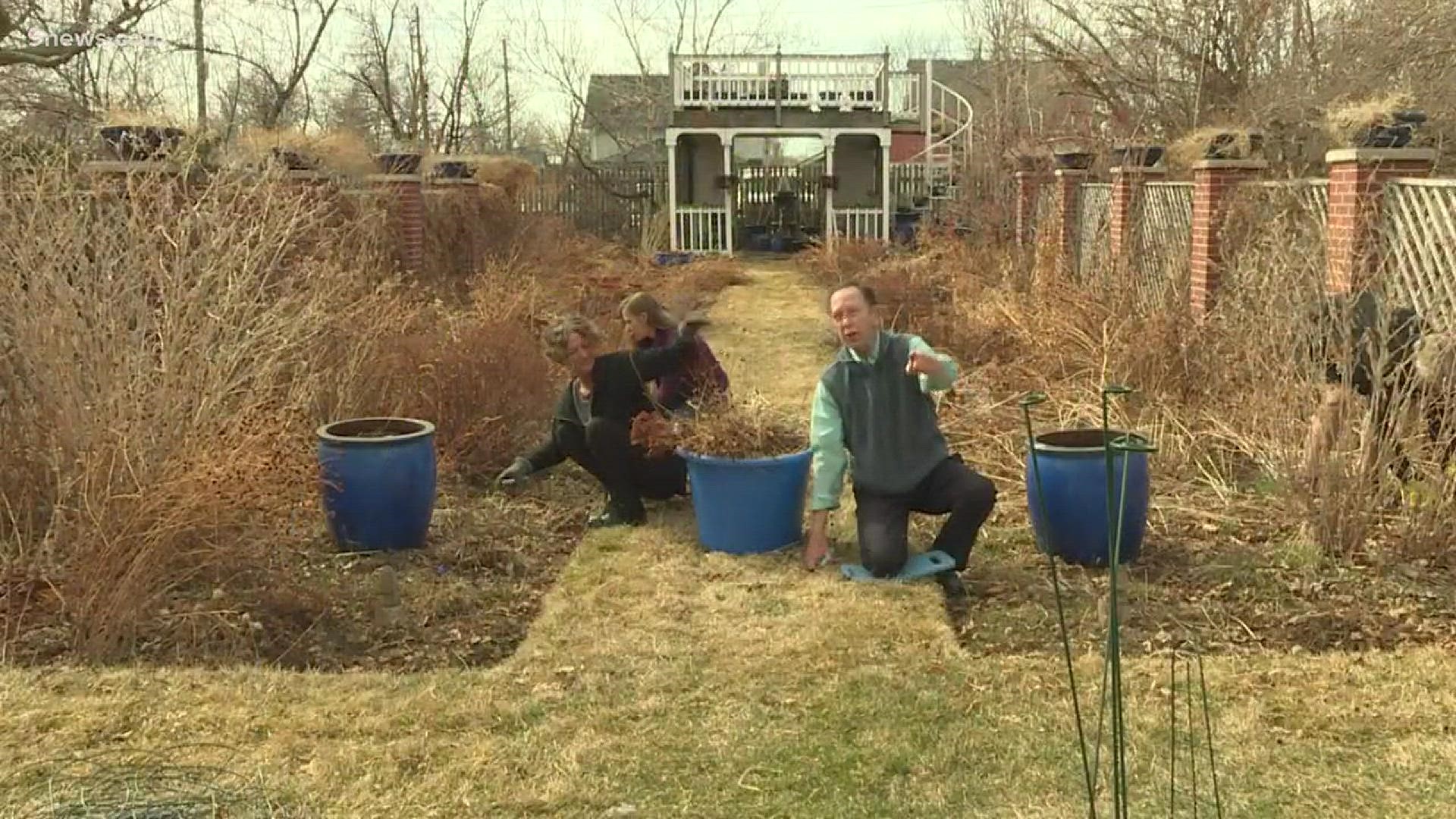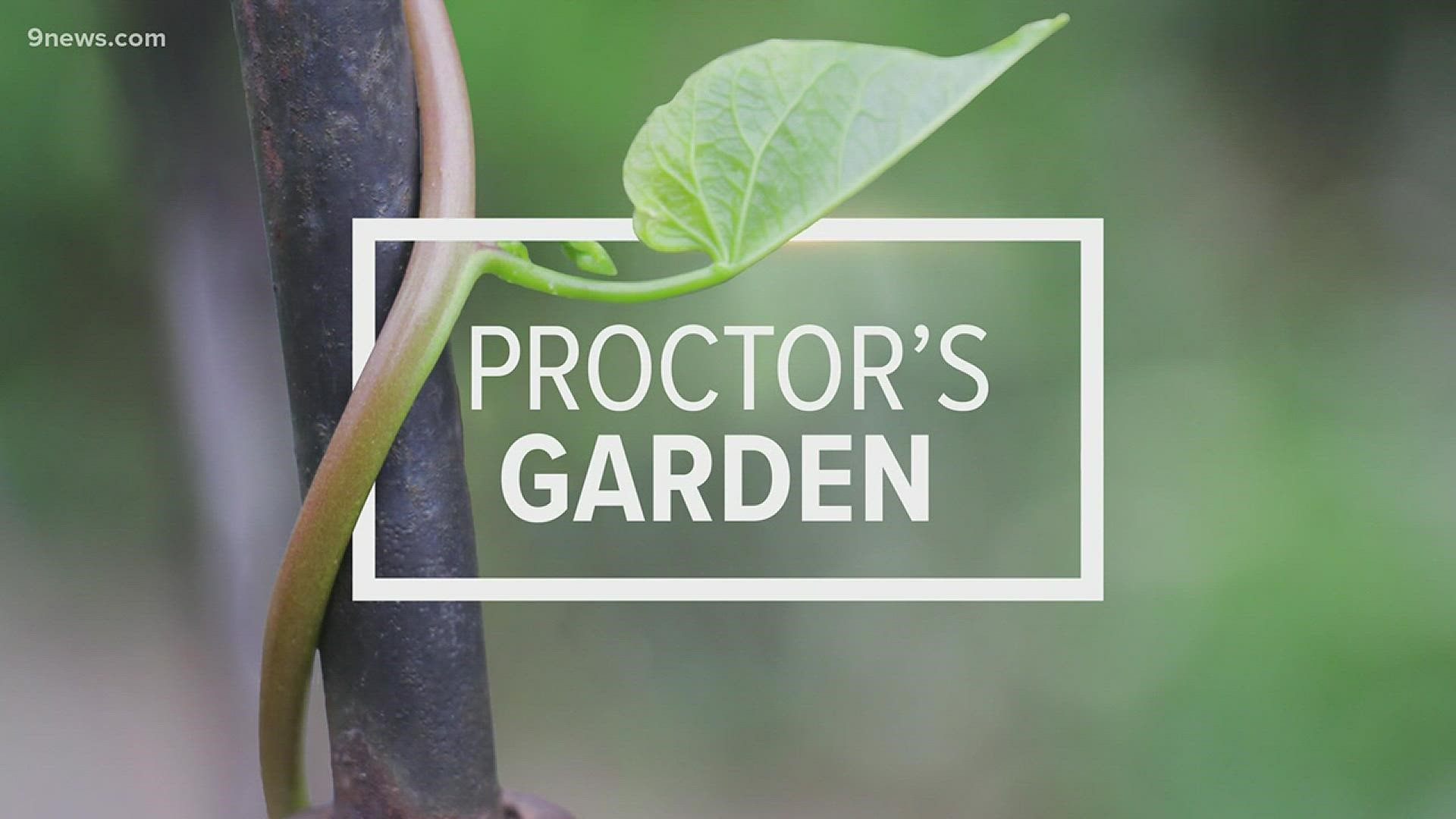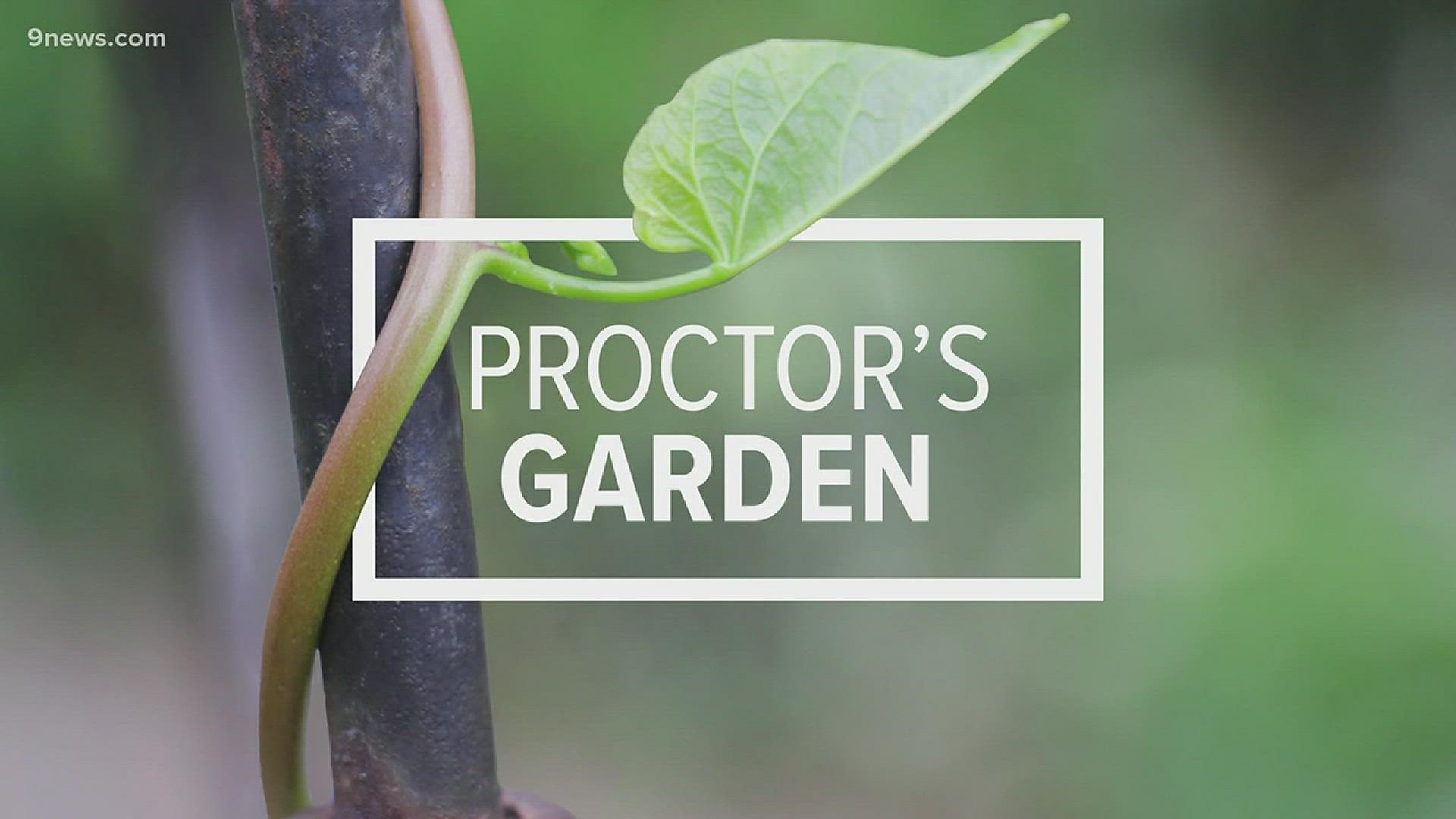COLORADO, USA — It’s spring in Colorado, and that means your garden is ready to become beautiful and lively again after a long winter.
9NEWS Gardening Expert Rob Proctor has been growing lush gardens in Colorado for decades, and he is so good at what he does, even his apprentices are some of the best around.
You can check out some of his spring-specific gardening tips below!
When should you start your spring garden? In Colorado, it's a gamble!
At the end of March, Rob Proctor declared that it's officially time to get back on your perennials!
What does that mean? Clean up your beds and borders, but don't get too tidy. Leave small debris and leaves in place. When they decompose, they'll enrich your soil.
If you planted bulbs in pots last fall and brought them outside, consider sinking the plastic pots they're growing in into a larger, more decorative pot.
Complement them with cool-season annuals such as pansies, primroses, ornamental kale, linaria and wallflowers. When the tulips, daffodils and hyacinths have finished blooming, simply lift them out. Later on, they can be replaced with warm season flowers, such as geraniums. The potted bulbs can be transplanted into the garden to bloom again next year.
A planting 101 refresher course
When it comes to planting, remember the basics:
- Use gravity to get plants out of pots.
- Do not "scruff" the roots. It just stresses the plants and transplanting is already stressful enough for them.
- Plant at grade or just slightly deeper knowing potting soil will settle.
- Keep plants moist, fertilize and deadhead. Use a "grow" formula of fertilizer high in nitrogen to encourage growth. Use a "bloom" formula high in phosphorous to promote flowering.
- At this time of year, it's wise to plant in big, but lightweight, plastic pots. If a frost or snow is forecast, they can more easily be brought inside or into the garage.
Spring starts with bulbs
If you planted bulbs of tulips, daffodils and hyacinths last fall, check on them. If they're showing shoots on top and roots coming through the holes of the pots, bring them outside.
Select a sunny spot protected from the north wind. Give the bulbs a good soaking and keep them moist, but not soggy.
It will take several weeks for buds to begin to show. Low night temperatures can damage the buds , so cover the pots with sheets or row covers if it drops much below 25 degrees.
Consider bees in garden planning
Erratic spring weather can play havoc with early-flowering plants. Their whole strategy is to emerge early and get pollinated by hungry bees. The less competition, the better — even if they risk getting snowed on.
Bees are venturing out on warm days to visit the flowers of crocus, snow iris and snowdrops. As you plan your summer garden, keep the bees in mind.
As you place your seed orders, consider flowers and herbs that attract bees. These include cosmos, asters, sunflowers, rudbeckia, scabiosa, calendula, ageratum, basil, parsley, zinnia, lavender, thyme and oregano.
What, how and when to fertilize
Some plants need fertilization. Some don't.
Lawns get the most fertilizer (often too much) but other plants that benefit from extra nutrients include annuals, vegetables and roses. Those grown in the confines of pots often need a steady regimen of fertilization.
Fertilizers contain three main ingredients -- nitrogen, phosphorous and potassium. The ratio of these elements is listed in order on the container, such as 5-10-5. All three are vital to plant growth. Nitrogen encourages growth. Phosphorous encourages blooming. Potassium encourages rooting and a healthy plant metabolism.
Fertilizers are formulated for particular plants. Grass and corn, for example, thrive with a high-nitrogen diet. Most blooming plants will benefit from a formula with a higher ratio of phosphorous. This type is often labeled as a "bloom booster." In addition, most fertilizers contain low concentrations of other elements that plants need such as copper, iron, magnesium, zinc and boron.
Plants with particular needs, such as roses, benefit from a fertilizer specifically tailored for them.
I keep it as simple as possible in my garden. The lawn gets composted manure in spring. The roses get three applications of Mile-High Rose Food on May 15, June 15 and August 1. The vegetables receive an organic fertilizer designed for them at planting and periodically throughout summer depending on performance. Tomatoes are a special case and are fertilized at planting time with a fertilizer formulated just for them. (Too much nitrogen on tomatoes will result in jungle-like growth but lousy fruit production.) Container plants, of which I have hundreds, get a standard, liquid-based organic fertilizer high in nitrogen at the beginning of the season. As they reach full size, I switch to a bloom booster.
When you should fertilize depends on the kind of plants. Roses have a definite schedule. My pots get fed every 10 to 14 days. How they're performing determines whether vegetables need additional feeding. I never fertilize perennials.
The rose food and vegetable food I use are both granular, so they are applied dry at the base of the plant and watered in. The fertilizer container plants and annuals is liquid. I mix it in a watering can.
Australian plants are an interesting case. The soil on the continent of Australia is deficient in phosphorous. Plants native to Australia evolved with a very low need for it. A bloom booster high in phosphorous will have little effect on them. These include blue star flower, kangaroo paws, straw flower and fan flower. They will perform best with a higher ratio of nitrogen and potassium.
Busting your gardening myths
What's true and what's not when it comes to gardening courtesy Rob Proctor himself:
Want more tips? Head to the Proctor's Garden section of 9NEWS.com: 9news.com/proctors-garden
SUGGESTED VIDEOS | Local stories from 9NEWS




